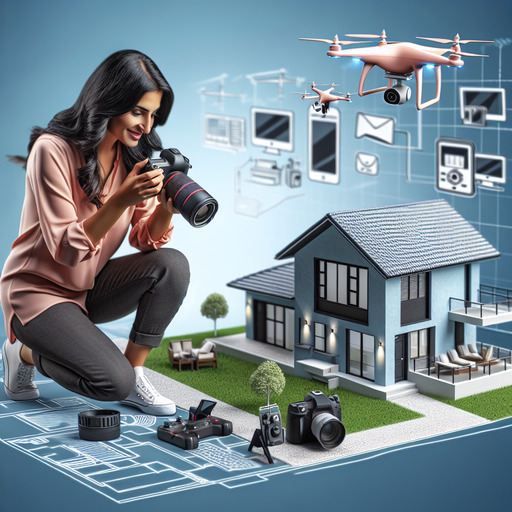
-
Table of Contents
- Mastering Real Estate Photography: Tips, Techniques, and Tools
- Understanding the Importance of Real Estate Photography
- The Impact of Quality Photos on Property Listings
- Essential Real Estate Photography Tips
- 1. Use the Right Equipment
- 2. Master the Art of Lighting
- 3. Perfect Your Composition
- Advanced Techniques: Real Estate Drone Photography
- Editing Your Real Estate Photos
- Pricing Your Real Estate Photography Services
- Conclusion
- Questions and Answers
- 1. What is the best time of day for real estate photography?
- 2. How can I make small rooms look bigger in photos?
- 3. What are the benefits of using a drone for real estate photography?
Mastering Real Estate Photography: Tips, Techniques, and Tools
In the competitive world of real estate, first impressions are everything. High-quality real estate photography can make or break a property listing, influencing potential buyers’ decisions before they even step foot inside. Whether you’re a seasoned photographer or a real estate agent looking to enhance your listings, understanding the nuances of real estate photography is crucial. This guide will walk you through essential tips, techniques, and tools to elevate your property photography game.
Understanding the Importance of Real Estate Photography
Real estate photography is more than just snapping pictures of a property. It’s about capturing the essence and potential of a space, enticing buyers to envision themselves living there. According to the National Association of Realtors, 87% of home buyers found photos to be the most useful feature when searching for a home online.
The Impact of Quality Photos on Property Listings
- Properties with high-quality images receive 118% more online views.
- Listings with professional photos sell 32% faster than those with amateur images.
- Homes with better photos can sell for up to $11,000 more.
Essential Real Estate Photography Tips
To capture stunning real estate photos, you need more than just a good camera. Here are some practical tips to get you started:
1. Use the Right Equipment
Investing in the right real estate photography equipment is crucial. A DSLR camera with a wide-angle lens is ideal for capturing spacious interiors. A sturdy tripod ensures stability and sharp images, especially in low-light conditions.
2. Master the Art of Lighting
Lighting can make or break a photo. Natural light is your best friend, so schedule shoots during the day when the sun is bright. Use additional lighting equipment to fill in shadows and highlight key features of the property.
3. Perfect Your Composition
Composition is key in real estate photography. Use the rule of thirds to create balanced and visually appealing images. Ensure that lines are straight and avoid clutter in the frame to keep the focus on the property.
Advanced Techniques: Real Estate Drone Photography
Drone photography offers a unique perspective, showcasing the property’s surroundings and providing potential buyers with a comprehensive view. Here are some tips for effective real estate drone photography:
- Check local regulations and obtain necessary permits before flying a drone.
- Use drones to capture aerial shots of large properties or those with scenic views.
- Incorporate drone footage into virtual tours for an immersive experience.
Editing Your Real Estate Photos
Post-processing is an essential step in real estate photography. Editing can enhance colors, correct lighting issues, and remove unwanted elements. Popular software like Adobe Lightroom and Photoshop offer powerful tools for real estate photography editing.
Pricing Your Real Estate Photography Services
Setting the right price for your real estate photography services can be challenging. Consider factors such as the size of the property, the complexity of the shoot, and the level of editing required. Research local market rates to ensure your pricing is competitive yet profitable.
Conclusion
Mastering real estate photography requires a blend of technical skills, creativity, and the right equipment. By following these tips and techniques, you can create compelling real estate listing photos that attract buyers and help properties sell faster. Remember, the key to success is continuous learning and adapting to new trends and technologies in the industry.
For more insights on real estate photography, check out this Wikipedia page on real estate photography.
Questions and Answers
1. What is the best time of day for real estate photography?
The best time for real estate photography is during the day when natural light is abundant. Early morning or late afternoon provides soft, diffused lighting that enhances the property’s features.
2. How can I make small rooms look bigger in photos?
Use a wide-angle lens to capture more of the room in a single shot. Keep the room tidy and decluttered, and use mirrors to create an illusion of space.
3. What are the benefits of using a drone for real estate photography?
Drones provide unique aerial perspectives, showcasing the property’s surroundings and layout. They are particularly useful for large properties or those with scenic views.
If you’re interested in learning more about our real estate photography services or have any questions, please contact us.